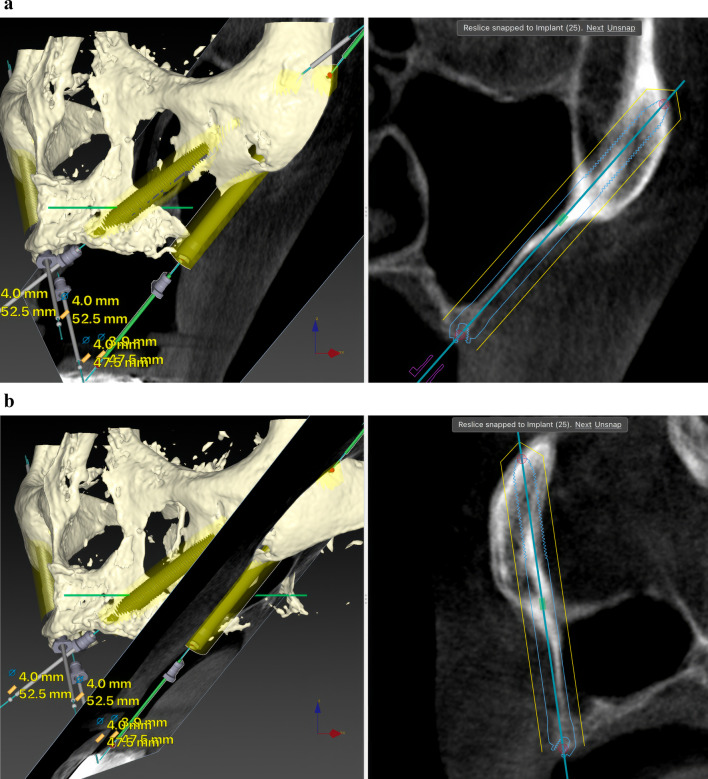Fig. 2.
a Oblique CBCT slice, taken using DTX Studio Implant software, showing the planning and anatomy at the level of the second premolar/upper left first molar of the ZAGA Flat implant in Fig. 1. b The DTX Studio Implant software allows the rotation of the oblique plane attached to the implant. Thus, we can observe that the planning for the placement of the ZAGA Flat implant in Fig. 1 includes the partial use of the anterior wall of the temporal fossa. By increasing the number of cortices crossed by the implant, we will increase its primary stability

